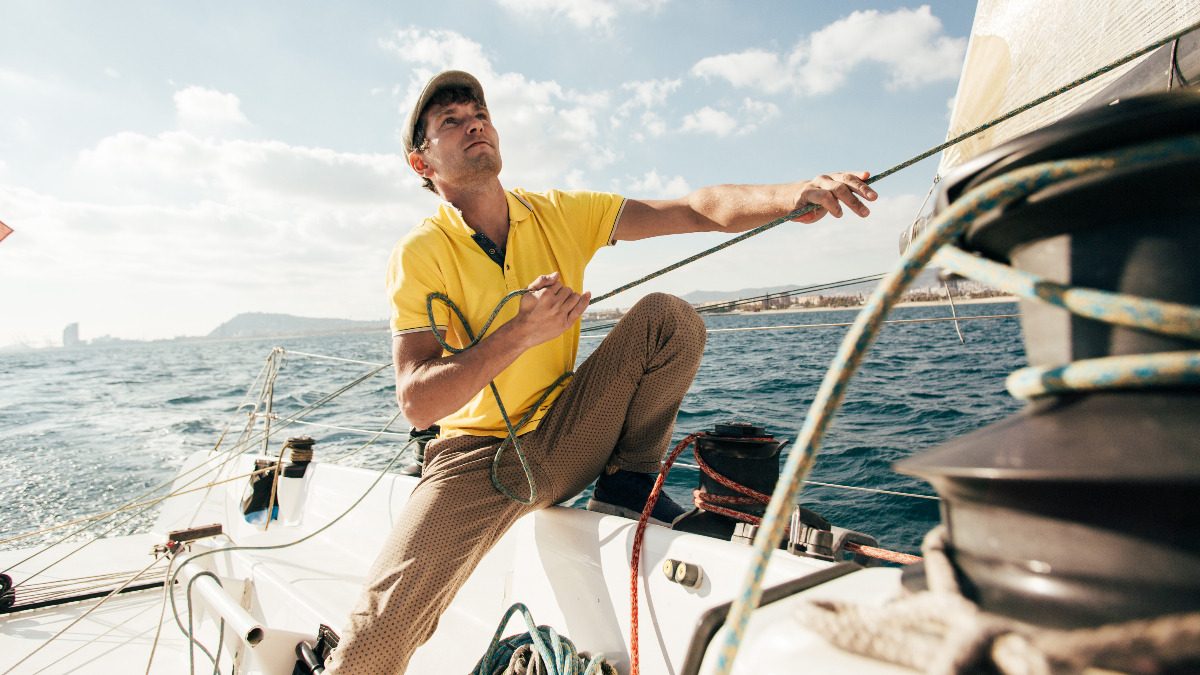
Sailing is an excellent sport for beginners. It’s easy, fun, inexpensive, and you can do it almost anywhere. But if you want to get serious about your sailing career, there are some things you need to think about before getting your first boat.
The following guide will help you decide what kind of sailboat is right for you, as well as how much money you should spend on a new boat. If you’re looking at buying a sailboat, one of the most important decisions you’ll make is whether or not you’d rather be out on the water cruising around in search of adventure or simply enjoying.
1. What type of sailboat should I buy?
There are two main types of boats that you will find on the market today: dinghies and keelboats. Dinghies are small sailboats with a mast that stands upright in the boat’s center. They have no keels or rudders, and they usually don’t have any form of propulsion system. Keelboats are larger than dinghies. Their masts stand perpendicular to the direction of travel. Some people call them “keeled” dinghies, but this term isn’t used as much anymore. Keelboats are generally more stable than dinghies because their hulls have keels. The keel acts like an extended rudder.
2. How do I choose the right size boat for me?
The best way to figure out what size boat you need is to consider several factors. First, consider the length of time you plan to spend sailing. If you’re sailing around the lake once or twice a week, you probably won’t need a huge boat. On the other hand, if you plan to go offshore for weeks at a time, you’ll need something more significant. Another essential factor to consider is where you plan to use your boat. If you live near a body of water such as Lake Michigan or Lake Erie, you may not need anything too big. However, if you live near a smaller pond or river, you might want to look into getting something longer so you can reach farther distances from shore. You also need to think about the amount of wind you expect to encounter while sailing. If you live in a place with lots of wind, you’ll probably need a larger boat than someone who lives in a region with little wind. Finally, it would help decide whether you want to learn how to sail or enjoy sailing. Suppose you’re going to know how you’ll need a boat that has enough room inside for you to practice basic maneuvers. If you want to enjoy sailing without worrying about sailing skills, you can get by with a smaller sailboat that is easier to handle.
3. Do I need special equipment?
If you want to learn how to sail, you’ll need a few items. Your first purchase should be a good pair of sunglasses. Sailing is hard work, and you’ll sweat a lot during lessons and races. Sunglasses protect your eyes from the sun and keep your vision clear. Next, you’ll need a helmet. Helmets prevent head injuries and accidents caused by falling overboard. Make sure you wear one when sailing. Also, make sure you have a life jacket. Life jackets save lives. In an emergency, wearing a life jacket could mean the difference between living and dying. Finally, you’ll need a compass. A compass tells you which way is north. This is helpful if you ever lose sight of land.
4. What’s the difference between a catamaran and a monohull?
A catamaran is a boat made up of two separate hulls connected. It’s similar to a canoe, except it has a fixed mast instead of a removable pole. Monohulls are single-hulled boats. These boats have only one hull. They’re often called “catamarans,” although technically, they aren’t true catamarans.
5. Why does my boat sink?
Your boat sinks because nothing is holding its weight down. When you launch your boat, you must keep it steady until it gets moving. Once your boat starts moving, it becomes unstable and begins to roll over. As long as your boat isn’t moving, it stays afloat. But once it starts rolling, the weight on top of the sailboat causes it to tip over. To avoid sinking, try using a mooring line. Moorings are ropes attached to the bottom of your boat. They help stabilize your boat and keep it upright.
6. How do I steer a boat?
To control a boat, you use the tiller. The tiller controls the rudder. The rudder steers the sailboat, and steering requires constant attention. If you don’t pay attention, you could accidentally turn in the wrong direction. Keep your hands close to the sides of the boat so you can have better control.
The steering wheel is located on the right side of the boat, and it’s usually near the stern. You steer by turning this wheel back and forth. To make turns, pull the wheel toward you. Then push it away from you. Removing the wheel toward you makes the bow point in the direction you want to go. Moving the wheel away from you makes the boat turn in the opposite direction.
7. How much do boats cost?
Boat prices vary depending on their size and features. Check out this site redbeardsailing.com for sample size and cost comparisons. Smaller boats typically cost less than larger ones. While larger boats usually provide more space. Some people choose to buy used boats. Used boats are cheaper than new ones. Buying a used boat allows you to customize your boat to meet your needs.
8. Where do I find a boat dealer?
You can find boat dealers all over the country or look online for websites that sell boats. Many companies offer free shipping. You can also search local classified ads.
9. Can I rent a boat?
Yes! Rentals are becoming increasingly popular. However, most rental companies require you to sign a contract before renting a boat. Read the fine print carefully. Ask questions before signing any papers. Be wary of hidden fees in the small print.
10. Do I need a license to operate a boat?
Yes, you need a boating license. You may not realize this, but operating a boat without a license is illegal. So, if you plan on taking your boat out into the open water, you’ll need to get a boating license. There are different licenses based on where you live. Contact your state transportation department or visit our website to find out what type of license you need.
Generally, there are many different types of boats with their unique characteristics. Each type has its strengths and weaknesses. Some boats are designed with speed in mind, while others are built for comfort. Some crafts are fun to sail. Finding the perfect boat depends largely upon personal preference, weather conditions, and the amount of time you’re willing to spend sailing.
If you’ve never sailed before, start slow. Once you feel comfortable, you can begin exploring the waters around you. If you already know how to sail, congratulations! You need to learn about the different sailboats and get one perfect for you.




